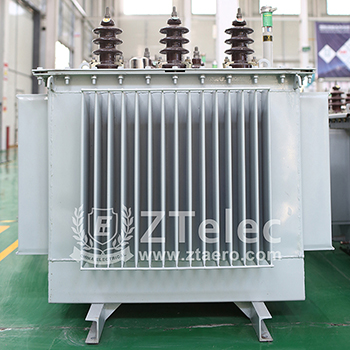- By ZTELEC GROUP
- 2024-07-27
For high-loss power transformer retrofits, several different methods are usually used, including some and all replacement transformers, so that the transformer can effectively reduce resource consumption after replacement. At the same time, there are transformer load losses, etc. If the transformation is carried out, then the windings in the transformer must also be better, so that the original transformer and the wires need to be replaced and adjusted in time. If the aluminum wire in the transformer is replaced by a copper wire, if the core of the transformer is not faulty, then the density of the intimate silicon steel sheet of the transformer will be correspondingly used to meet the standard requirements.
The main process of distribution transformer a high-loss transformer into a low-loss transformer is to first test the SL7, S7 or S9 high-energy transformers that need to be modified to test their no-load losses; according to the no-load loss value of each oil-immersed transformer By reducing the magnetic density of the silicon steel sheet, increasing the number of turns in the transformer winding, reducing the capacity of the transformer, etc., the transformer to be modified is redesigned to meet the performance specifications of the S11 low-loss transformer.
The dismantled materials are processed in the following manner: melting the removed old copper wire for the production of cast copper parts of other products; using the old transformer oil for lubrication of the machining shop lathe; The transformer tank is scrapped or subjected to derusting, pickling, painting and other processes for remanufacturing according to the degree of corrosion; for the dismantled old silicon steel sheet, if the quality is poor or in operation If the burn is severe, it will be scrapped. If the quality is good, it should be used. It will be used in the transformer after being treated by rust removal and adding new silicon steel sheet; if the insulation paper in the transformer is deteriorated or damaged.

Design the drawings of the high-voltage winding and low-voltage winding of the dry-type transformer that needs to be modified, and perform the operation of the transformer body assembly, lead wire, and total assembly according to the manufacturing process of the new transformer. After the completion of the assembly, the test before the factory is carried out according to the requirements of the newly manufactured transformer, and the performance of the transformer after the transformation is verified to meet the requirements of the national standard, and the factory is allowed to leave the factory. For the core of a high-loss distribution transformer, since K0 and GFe are fixed values, to reduce the no-load loss P0, the Pw value must be lowered, and the Pw value is related to the magnetic flux density of the silicon steel sheet. After the transformation, since the iron core is not replaced, and the voltage and frequency are also unchanged, the no-load loss is reduced. Only the method is to reduce the magnetic flux density in the iron core, thereby lowering the Pw value of the silicon steel sheet.
In practical engineering applications, in order to make better use of the iron core, the no-load loss of the distribution transformer that needs to be modified at the original 匝 potential cannot meet the requirements of the current low-loss distribution transformer. The no-load loss is tested by a method of appropriately adjusting the number of turns of the low-voltage winding.
ZTELEC power transformer, energy saving, low loss.
- Tags:
- power transformers,transformer,Distribution transformer










Leave A Comment